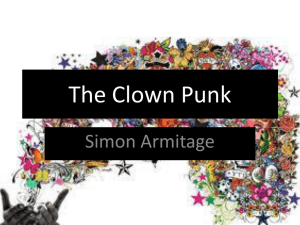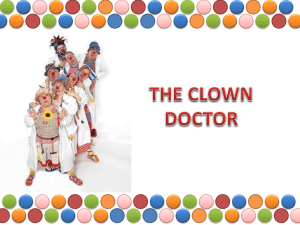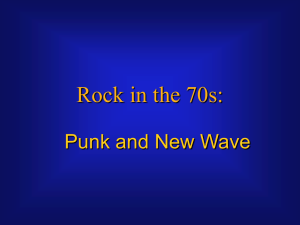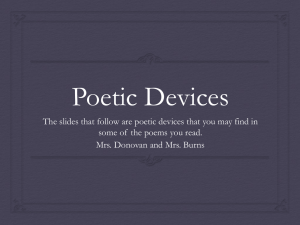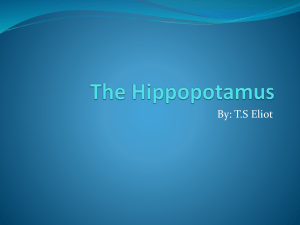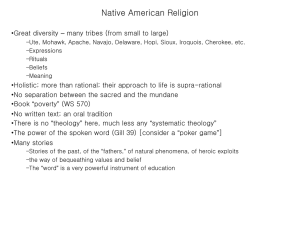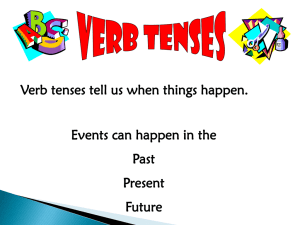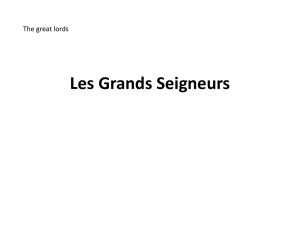The Clown Punk File - the Redhill Academy
advertisement
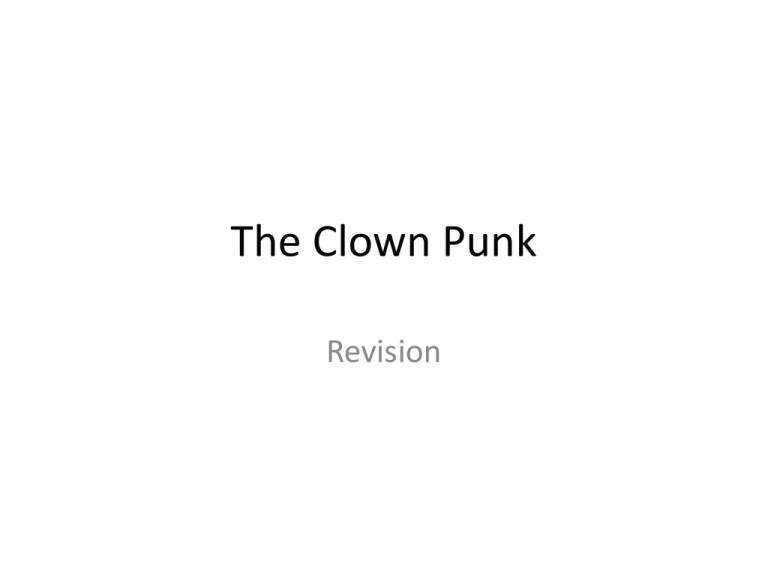
The Clown Punk Revision Read the poem through! Terms you’ll need to know • Enjambment – when one line of poetry carries on to the next one without any punctuation and walked, towing a dog on a rope. But don’t laugh: every pixel of that man’s skin is shot through Terms you’ll need to know • Assonance = the same vowel sounds in words close together after one another three times out of ten you’ll see the town clown, Terms you’ll need to know • Sonnet = a 14 lined poem that usually is about love Terms you’ll need to know • Full rhyme = when words at the ends of lines in poetry rhyme completely Driving home through the shonky side of town, three times out of ten you’ll see the town clown, Terms you’ll need to know • Internal rhyme = full rhyme within a line of poetry three times out of ten you’ll see the town clown Terms you’ll need to know • Half rhyme = when words at the end of lines of poetry almost rhyme (also known as pararhyme) You kids in the back seat who wince and scream when he slathers his daft mush on the windscreen, Vocabulary • Shonky = dirty and derelict Vocabulary • Punk = a follower of rock (old meaning = worthless person) Vocabulary • Mush = informal for face/mouth The Title Analysis WHAT DO YOU NOTICE ABOUT THE TITLE? Clown = something funny to laugh at The Clown Punk Punk = rocker (or worthless person) Stanza by Stanza Analysis WHAT DO YOU NOTICE ABOUT THIS STANZA? These words make the poem seem chatty and light hearted Addressed to the reader Driving home through the shonky side of town, three times out of ten you’ll see the town clown, like a basket of washing that got up and walked, towing a dog on a rope. But Simile: describes untidy appearance of clown punk Tone: seems like a fun thing to see; the tone is happy. The word choice and easy rhythm create a positive tone Enjambment: unconventional for a sonnet – suggests we’re being told a story Stanza by Stanza Analysis Metaphor: his skin hasn’t actually been shot through but the ‘tattoo gun’ has damaged his skin beyond repair WHAT DO YOU NOTICE ABOUT THIS STANZA? These words create a negative or derisive tone which is added to by the condescending last line as though the narrator is sneering at the clown punk, thinking he’s pathetic don’t laugh: every pixel of that man’s skin is shot through with indelible ink; as he steps out at the traffic lights, think what he’ll look like in thirty years’ time – Tone: the tone has become serious because of the words ‘don’t laugh’ are usually used when we’re being told off Enjambment used to allow for extra detail about clown punk The narrator appears to be talking to his children Stanza by Stanza Analysis ‘sad tattoos’ suggest the clown punk is pathetic ‘daubed’ suggests the tattoos were badly done ‘deflated’ and ‘shrunken’ show the clown punk’s age; it also reminds us of a clown’s balloon that has literally deflated and shrunk – like the fun has gone from his life with age the deflated face and shrunken scalp still daubed with the sad tattoos of high punk. You kids in the back seat who wince and scream when he slathers his daft mush on the windscreen, ‘daft mush’ suggests the narrator thinks the clown punk is silly (daft) and idiotic – this creates a derisive/negative tone WHAT DO YOU NOTICE ABOUT THIS STANZA? Like the punk – the punk era has ended The last two lines suggest the clown punk is threatening – comment aimed at outsiders from society Stanza by Stanza Analysis WHAT DO YOU NOTICE ABOUT THIS STANZA? The narrator is suggesting to his children that they should remember the clown punk but then forget him – he is dismissing the clown punk; he has no respect for him because like all rebellions he feels this one won’t last which continues the negative and derisive tone remember the clown punk with his dyed brain, then picture windscreen wipers, and let it rain. The narrator tells the children to look and remember the clown punk but then to focus on the windscreen wipers in front – the rain could suggest the narrator is waiting for the rain to wash away the clown punk Metaphor: his brain isn’t literally dyed but the narrator seems to be suggesting that the punk era has ‘died’ (pun) and is out of date This poem shows… The end of the punk era and the way that the punk was seen as an outsider. The poem is showing the end of youthful rebellion and the dismissive nature of society towards outsiders. In this poem the outsider, the clown punk, is threatening. Meanwhile the car symbolises the normal life that the punk has refused to be a part of.


